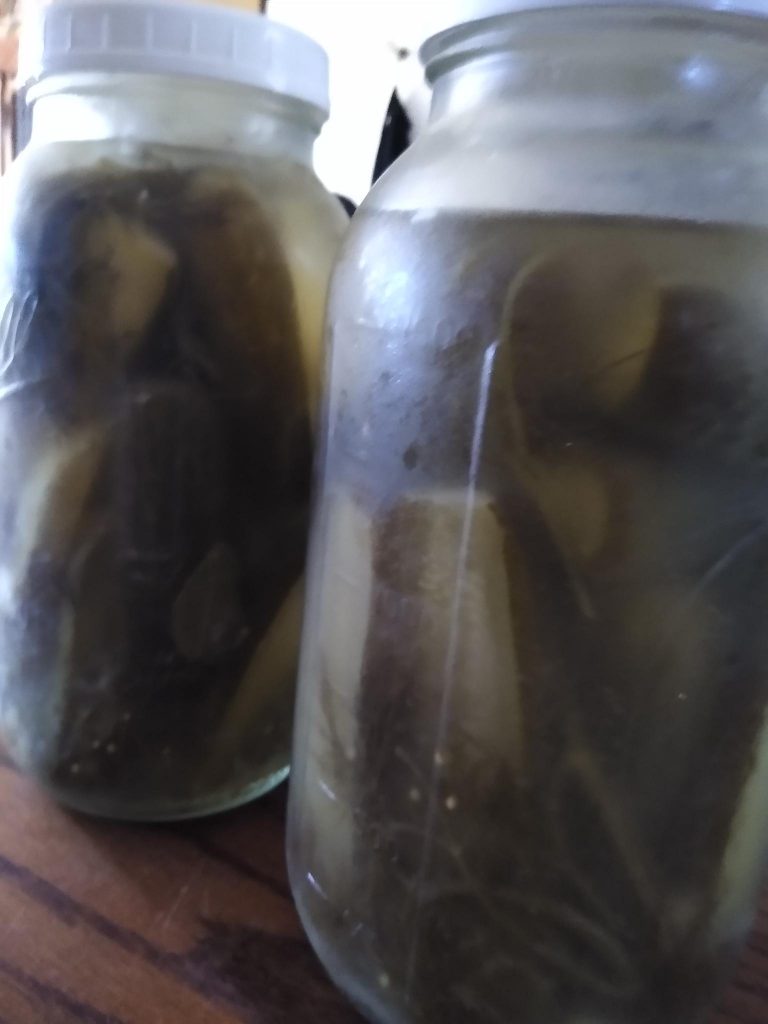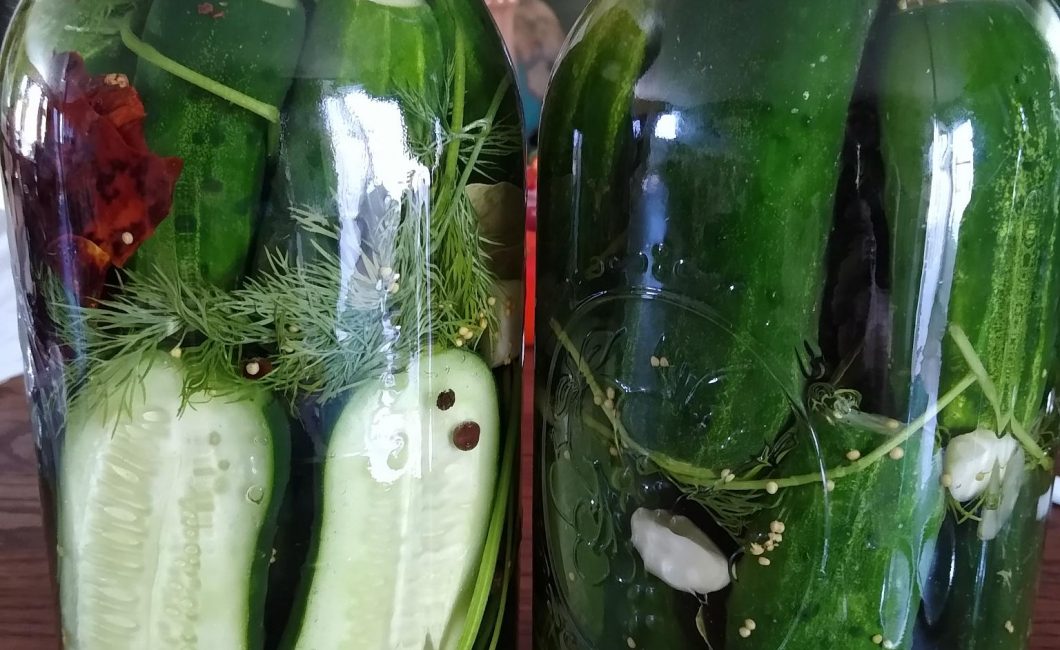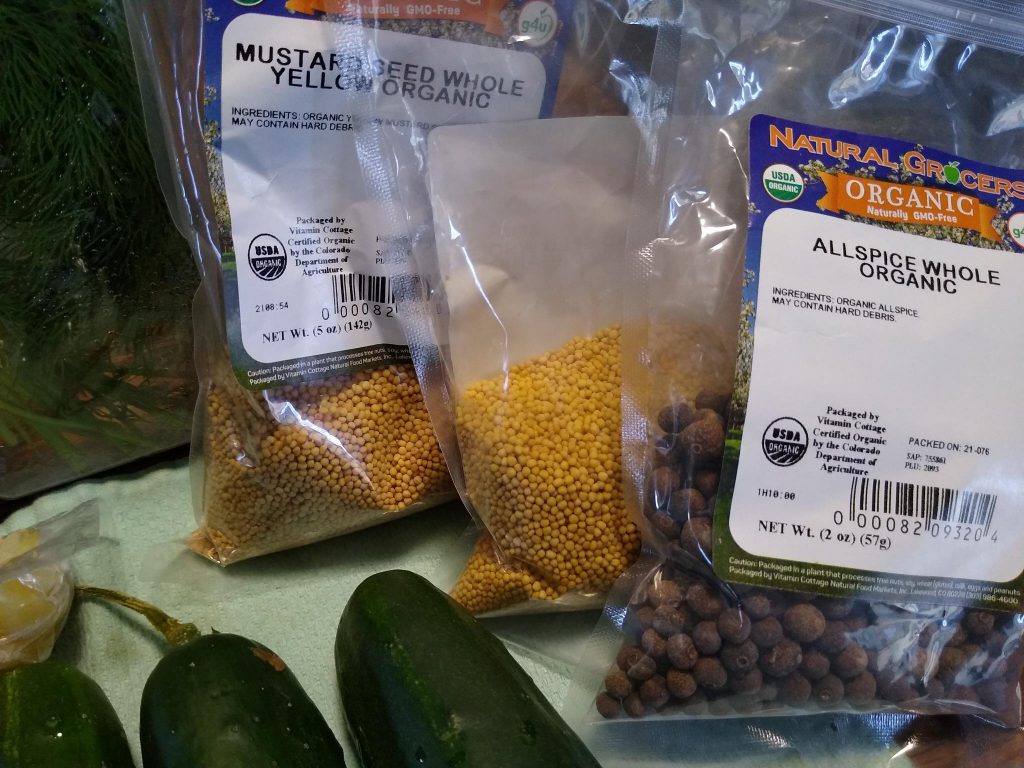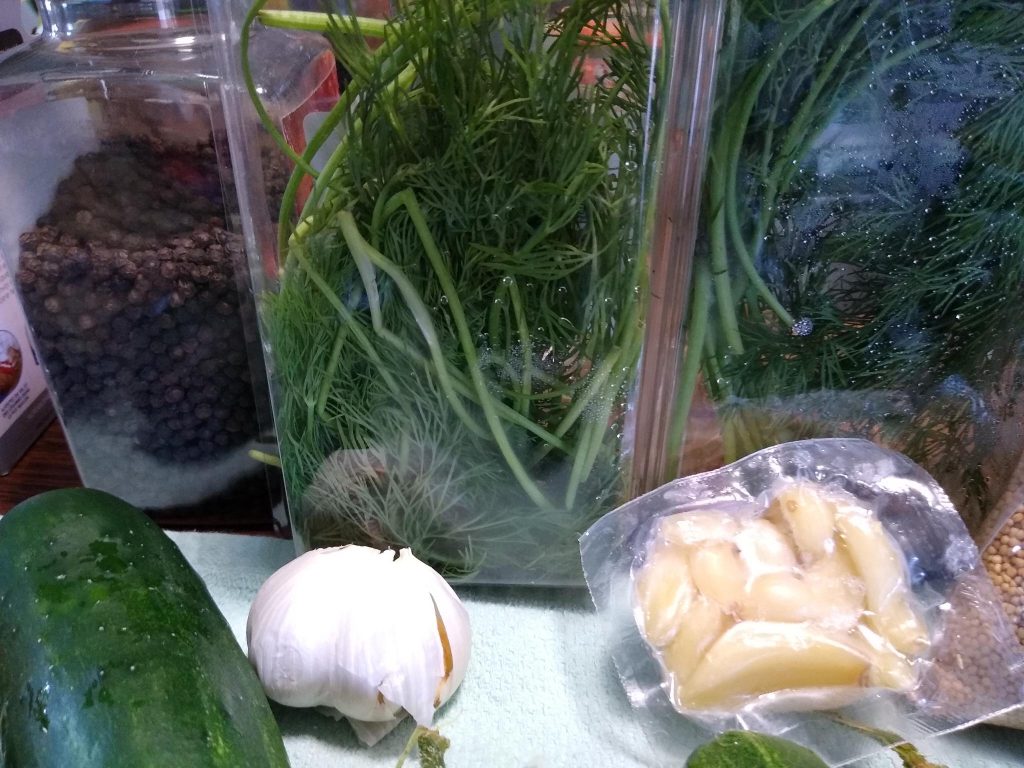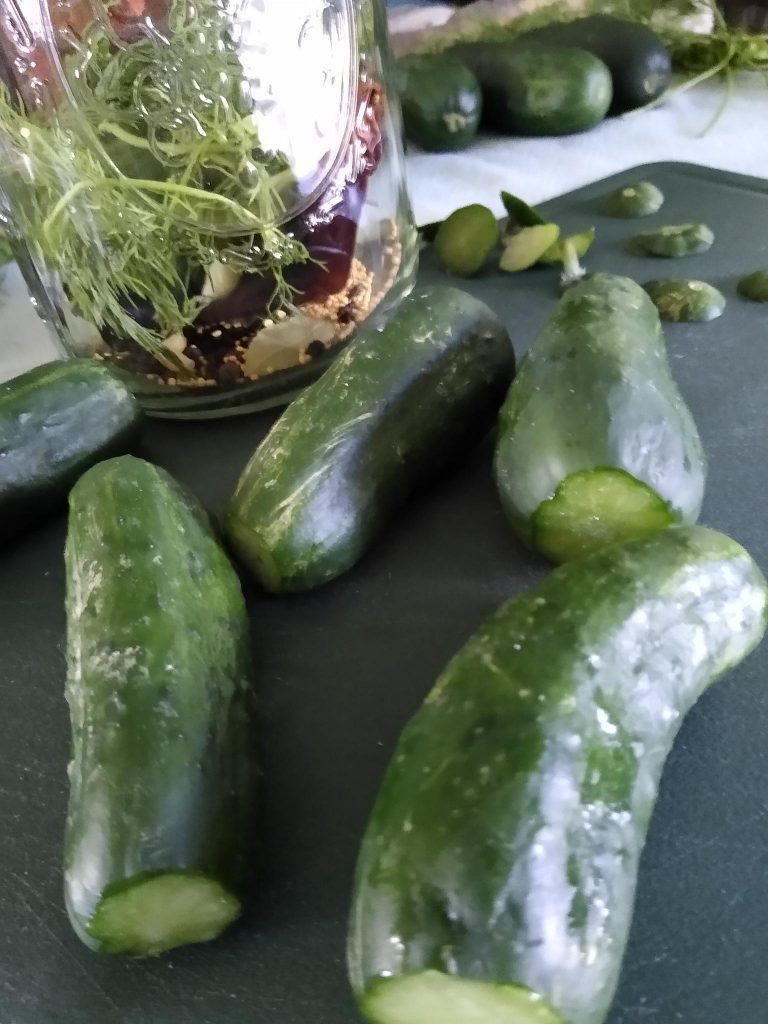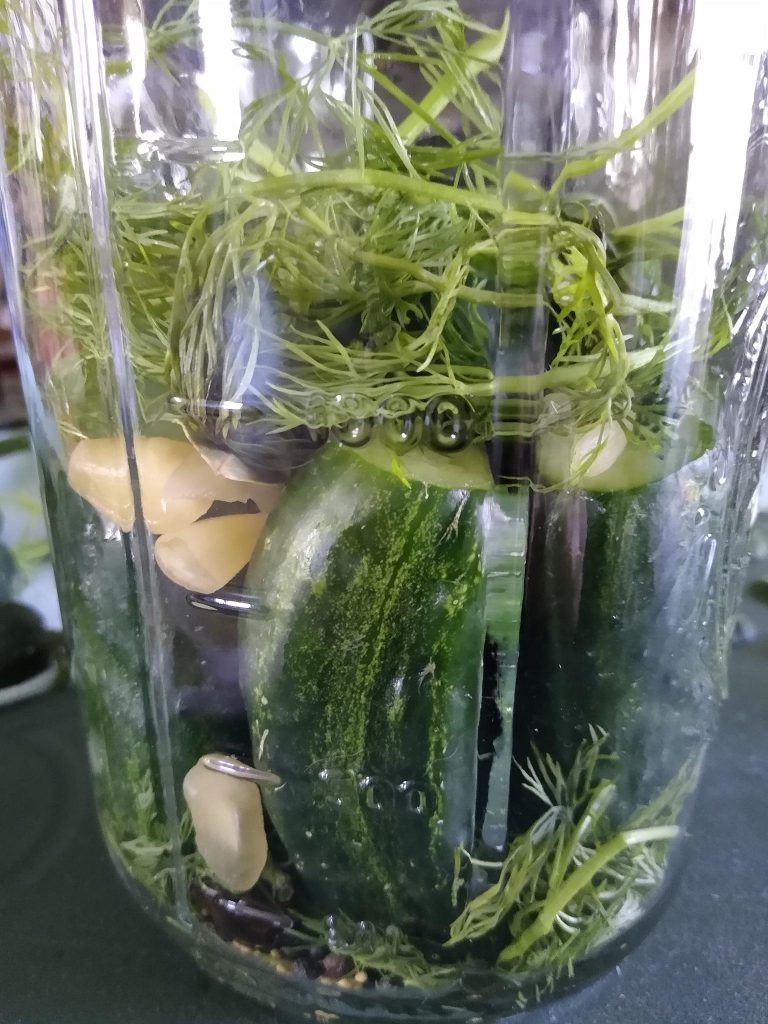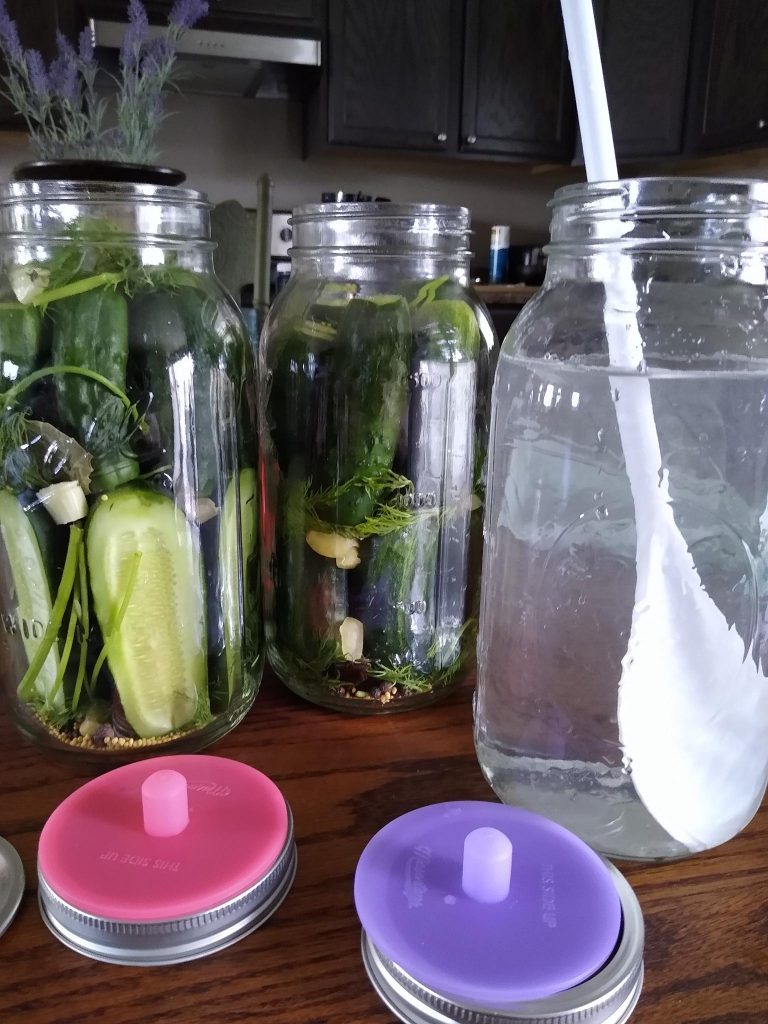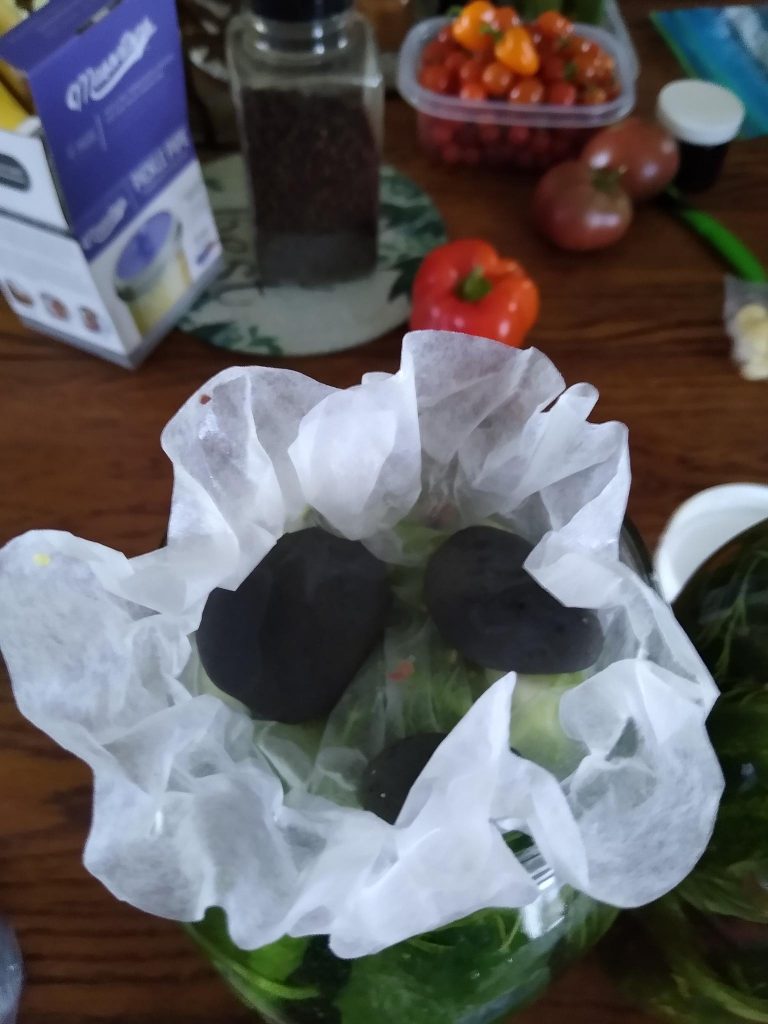Recipe
This recipe is written for my girlfriend Amy. 🙂
Homemade Fermented Pickles
We already know fermented pickles are great for your gut. But trust me on this one…If you have heartburn, or acid reflux, go into your frig, and eat a couple of fermented pickles. Then, you will sleep like a baby! I mean it, it works! They also help with your immune system if loaded with garlic. My hubby loves them, as well as my dog, Giddyan! He gets a couple little bites once in a while.
With that said, first, purchase pickling cucumbers that work the best, and stay crisp. I have not tried other cucumbers, but you can try it. Just make sure to put a lot of bay leaves in there, because there is tannin in bay leaves (in ingredients below,) and tannin keeps cucumbers crisp when fermenting.
You can use half gallon jars, quart size jars, or a giant pickle barrel, or ceramic tub, then jar them after they ferment with the brine, and refrigerate. You can slice them, spear them, or keep them whole. I like to stick all my pickles inside the jars I’m going to use, before I even wash them all, so I can tell what size jars I’m going to need. This recipe is for two half gallon jars. To add, or reduce salt content for different size jars, see below, and/or use a salt brine calculator.
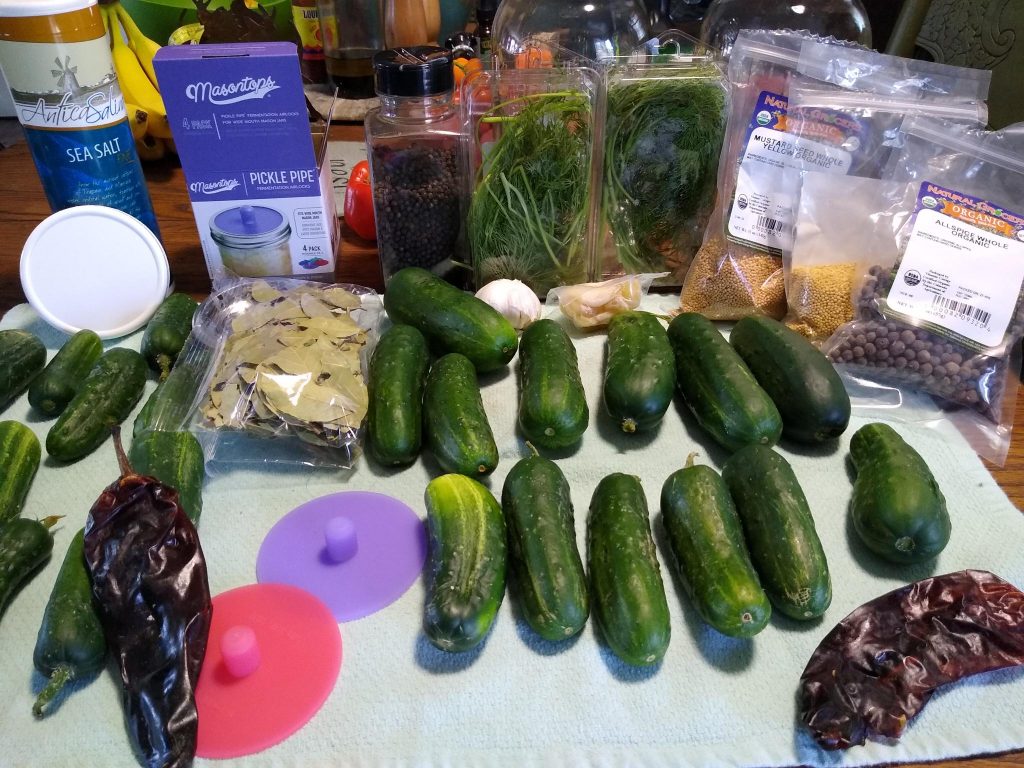
You need:
- Pickling cucumbers- about 25, depends on their sizes (here in the photo, I have small, med, and large, that fit 2 half gal. Ball Jars.)
- Choose a bowl, pitcher, another half gal jar, or pot to hold the brine water. Whatever you have.
- Two half gal. jars for your cucumbers
- 4 1/2 tablespoons sea salt (for two, 1/2 gal jar of pickles or more)
- 8 cups of unchlorinated water (for two, 1/2 gal jar of pickles or more)
4.5 tbsp. salt to 8 cups
- Lids – you can use a regular lid, but it will leak which is normal, and you do not really want air to get in during the fermenting process because that can create kahm yeast (which is perfectly safe to eat) or mold (not safe to eat). Order some mason jar fermenting lids, they come in silicone.
- Fermenting Weights- they sell glass fermenting weights, as well. I just use a coffee filter with river rocks. Raw clean river rocks without coating.
- Pickling seasonings (below)
Step 1) Wash your pickling cucumbers with baking soda, if they are not organic, or from your own garden- use hands or a soft brush. A potato scrub brush may be too harsh on their skin. Dry them off so there’s no chlorinated water on them because chlorinated water can mess up the fermentation process.
Step 2) Wash your jars, lids, and weights with hot soapy water. I boil water and pour water over the already hot jars, lids, and weights, and let them dry so there’s no chlorinated water in/on them.
Step 3) To make your salt brine, a lot of people do it differently, and you can try different ways, but what I do, I use a salt brine calculator online. Either use a bowl to put your water in, or a pitcher, pot, or another half gallon jar. For cucumbers you want to use at least a 3% brine which is 57.6 grams of salt per 8 cups of water. That’s about 4 1/2 tablespoons of salt in unchlorinated, filtered, or distilled water.
*You must not use table salt! It has caking agents/chemicals in it, so you need to use sea salt, or pickling salt, or Himalayan salt. Sea salt is my favorite, but I have used Himalayan, it’s just as good.
Okay, let it dissolve.
I do not measure my flavoring ingredients. I wing it, so, do this by your taste. Here is what you will need to create pickles and some approximate measurements.
Step 4) Cut the blossom and the end off your pickles that will keep them from getting soft. Slice them the way you want them, or leave whole. I find that putting the larger pickles at the bottom, leaves room for the smaller pickles at the top.
Step 5) Layer your jar with some of the seasoning, such as, garlic, dill, bay leaves, peppercorns, mustard seeds, and then your cucumbers. Repeat until you reach the top of the jar. Don’t forget to leave room for when you add your weight.
- 1)Garlic- 4 or 5 cloves to be modest, cut or smashed to release flavor. Or as much as you want. I add about 7 or more in the winter for very good medicine. Eat the fermented garlic as well, in salads, or other foods, it’s so good for you!
- 2)Mustard seed- a couple tablespoons or more
- 3)Bay leaves- 4 or more
- 4)Peppercorns- a couple tablespoons or more
- 5)Fresh dill- I put in about 10 full sprigs with stems and dillweed. You can get a full container at a grocery store. I use one full container of fresh. I really don’t use dry, but you can use, I would say, 3, or 4 tablespoons? Use your own discretion with that, because I’ve never used it. I love my pickles to taste like dill and garlic so, the more, the better, to me….
- Optional seasonings- a red chili pepper. I’ve used dried. A teaspoon of allspice berries, a couple of teaspoons of coriander, you can even add cinnamon sticks, red pepper flakes. I’ve tried all of the above and I just like my basic pickling flavor. I did add a chili pepper, and about 4 allspice berries this time.
Step 6) Add your brine, and fill it until your cucumbers are entirely covered, add your weight, and then your fermenting lid. You want to make sure that all cucumbers are covered under the brine to prevent any molding. * See notes at the bottom.
Step 7) Now let it ferment! Place your jar in a cool dark place. Maybe in your cabinet and leave it alone for a few days. I suggest putting a plate, or a bowl underneath, because it will leak as the fermenting brine starts to carbonate. The longer you leave it ferment, the more sour your pickles will taste. Personally, I check them after 3 days and taste one. As long as it doesn’t taste too salty and you can taste how it’s fermenting with all flavors, I change the lid to a regular lid, and put the jar in the refrigerator. I prefer half sourness. It will continue to ferment at a slower pace in the frig, but they turn out delicious, and I can keep them in my refrigerator for up to 6 months, however, they never last that long.
Enjoy your pickles!
Notes–
- I have never had my pickles mold, however, I have had kahm yeast that looks like white flakes. It is safe to eat and did not interrupt the taste of my pickles. I believe this happens if air gets into your seal while fermenting. It disrupts the Ph balance of the bacteria and brine. I am not an expert on the science, so, look that up if necessary. I think it happens to me when I open the jar to taste one and reseal it if it is not ready, (do not put your bitten pickle back into the jar hahaha!) or, maybe, it just ferments too fast? That all depends on how warm, or cold your house is. Keep it in a cooler dark place, not cold, I mean… warm is ok, just not in a too hot, or humid place. Also, remove blemishes, or bruises, and do not use an unhealthy cucumber. I’ve also dealt with slimy brine. The pickles are still ok to eat if you wash off the brine, but it grossed me out, so, I wasted a lot of food by throwing them out. At least put them in your compost. These things can happen when you ferment. Most of the time, you did nothing wrong. This is a wild ferment, it all depends on what type of good bacteria that is on your cucumbers in conjunction with it’s environment. As long as everything else is sterile, clean, out of sun, or heat, and sealed properly, it should all work out ok. The best lids in my opinion are the silicone piping fermenting lids. FYI. There is a lot of stuff online to research. This is just a recipe, for now.
- For 1 half gallon size jar, it took four cups of salt brine to fill it. 28.8 grams of sea salt is about 1.68 tablespoons.( I add 2 and 1/4) This is if you would like to cut the recipe in half, use half as many cucumbers, as well. If you are short on brine and need to add more, to make one cup that you may need additional when adding more brine to your jars, you would add 7.2 g salt, per one cup of unchlorinated water. That equals to about 1.44 tsp/teaspoon, not tablespoon, of salt per 1 cup water. This way you can use the extra to top off your jars.
